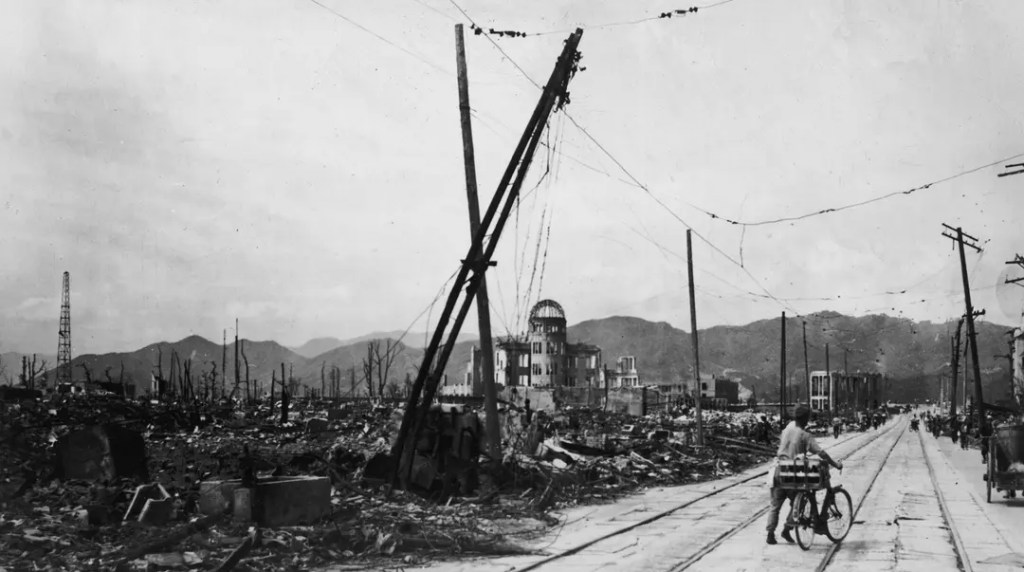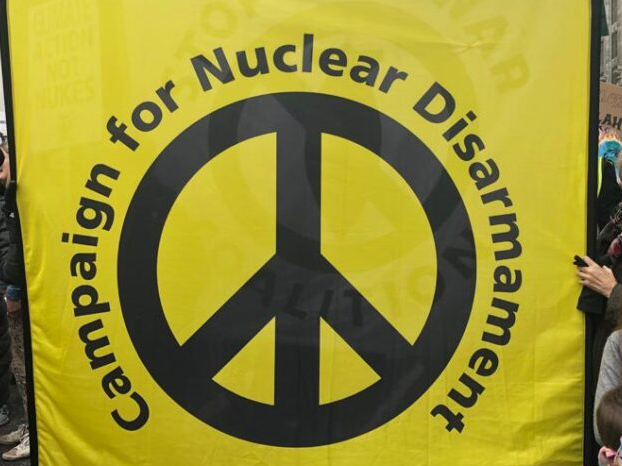A World at War
By 1945, World War II had been raging for six years. The conflict had engulfed much of the globe, causing immense destruction and loss of life. In the Pacific, the Allies were engaged in fierce battles with Japan, which continued to resist despite heavy losses.

Image: Battles in the Pacific during World War II.
The Manhattan Project
To bring a swift end to the war, the United States embarked on a secret project known as the Manhattan Project. This initiative aimed to develop an atomic bomb, a powerful new weapon that harnessed the energy released by splitting atoms. Scientists worked tirelessly to achieve this breakthrough.

Image: Scientists working on the Manhattan Project.
Hiroshima: August 6, 1945
On August 6, 1945, the B-29 bomber Enola Gay dropped the first atomic bomb, codenamed “Little Boy,” on the city of Hiroshima. The explosion devastated the city, killing tens of thousands of people instantly and causing widespread destruction.

Image: The mushroom cloud over Hiroshima following the detonation of “Little Boy.”
Nagasaki: August 9, 1945
Three days later, on August 9, 1945, a second atomic bomb, codenamed “Fat Man,” was dropped on Nagasaki by the B-29 bomber Bockscar. This bombing resulted in similar devastation and loss of life, further demonstrating the destructive power of atomic weapons.

Image: The mushroom cloud over Nagasaki after the detonation of “Fat Man.”
Japan Surrenders
The unprecedented destruction caused by the atomic bombs, combined with the Soviet Union’s declaration of war on Japan, led to Japan’s unconditional surrender. On August 15, 1945, Emperor Hirohito announced Japan’s surrender in a radio broadcast, bringing World War II to an end.

Image: People cry as they listen to the Aug. 15, 1945, radio broadcast of Emperor Hirohito announcing Japan’s surrender on the radio.
The Aftermath
The bombings of Hiroshima and Nagasaki left long-lasting effects. Both cities were left in ruins, and survivors, known as hibakusha, faced severe health issues due to radiation exposure. The bombings also sparked a global debate about the ethics and future of nuclear warfare.

Image: The devastation in Hiroshima after the atomic bombing.
Rebuilding and Memorials
In the years following the bombings, Hiroshima and Nagasaki were rebuilt. Today, they stand as symbols of peace and resilience. The Hiroshima Peace Memorial Park and the Nagasaki Peace Park serve as reminders of the tragedies and promote messages of peace and nuclear disarmament.

Image: The Hiroshima Peace Memorial Park, dedicated to the victims of the atomic bombing.
A Lesson for Humanity
The atomic bombings of Hiroshima and Nagasaki marked a turning point in history. They highlighted the devastating power of nuclear weapons and underscored the need for international cooperation to prevent future conflicts. The events serve as a solemn reminder of the horrors of war and the importance of striving for peace.

Image: A symbol of peace and the commitment to a world without nuclear weapons.




